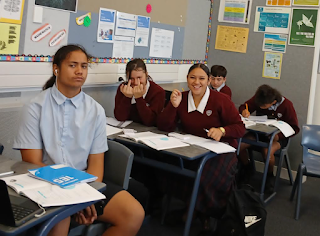My Inquiry is a whole school approach to Numeracy.
Over the years, I’ve come to see that numeracy isn’t just about numbers—it’s about thinking. It’s about giving our students the confidence to solve problems, make sense of the world, and believe in their own ability to succeed. And yet, many of our learners are still falling below national standards. With the new NCEA Numeracy Co-requisite, we all know—this is not just a maths issue. It’s a school-wide one.
That’s why this year, I’ve been developing a whole-school approach to improving numeracy—one that brings every teacher into the conversation. The idea is simple: help all subject teachers see where numeracy lives in their own learning area, give them the tools to strengthen it, and make sure none of it adds unnecessary workload..
Through a focus group of Social Studies, Science, and Technology teachers, we’ve been collaborating, sharing ideas, and building a network of support. I’ve also been applying these strategies in my own classroom—so that I’m not just leading this work, but living it. Thank you, Dr Janni.
We introduced small but meaningful changes:
– CAA team formed to oversee the progress.
– short “10-minute Do Nows” in every subject to reinforce daily numeracy practice, Graphics organiser, and think-aloud strategy.
– after-school, holiday tutorials, booster sessions.
– ViTal sheets to track progress,
– Education Perfect activities, workspace, and videos to rewind their learning.
Collaboration was the key—I created a shared folder for resources, attended MOE and AMA workshops, connected with cluster groups, and shared our learning through staff PLDs and the Kahui Aho blog.
I have seen a positive shift in Teacher awareness, students' confidence, the number of students who sat the exam, and their well-being. And the positive Correlation between study classes and results.
The data supports this too: 64 students passed Numeracy this year, and Year 9 and 10 results have doubled compared to last year. PAT results made a positive impact.
My own year 10 class-So far, five passed Numeracy, and PAT shows ten made a positive shift, and seven students reached PAT 5 or more, with 2 more to assess.
Of course, it’s not without challenges—teaching numeracy while meeting other deadlines is never easy—but the progress proves that collaboration works.
I truly believe that when we, as teachers, come together—sharing data, strategies, and success—we don’t just build numeracy. We build confidence, capability, and opportunity for every learner.
Ngā mihi nui.










































